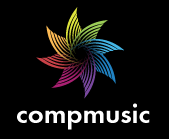Carnatic Music Rhythm Dataset
CompMusic Carnatic Rhythm Dataset is a rhythm annotated test corpus for automatic rhythm analysis tasks in Carnatic Music. The collection consists of audio excerpts from the CompMusic Carnatic research corpus, manually annotated time aligned markers indicating the progression through the taala cycle, and the associated taala related metadata. A brief description of the dataset is provided below. For a brief overview and audio examples of taalas in Carnatic music, please see http://compmusic.upf.edu/examples-taala-carnatic
Reference:
Please cite the following publications if you use the dataset in your work:
- Srinivasamurthy, A., Holzapfel, A., Cemgil, A. T., & Serra, X. (2015, October). Particle Filters for Efficient Meter Tracking with Dynamic Bayesian Networks. In Proceedings of the 16th International Society for Music Information Retrieval Conference (ISMIR 2015) (pp. 197–203). Malaga, Spain. (Subset)
- Srinivasamurthy, A., & Serra, X. (2014, May). A Supervised Approach to Hierarchical Metrical Cycle Tracking from Audio Music Recordings. In Proceedings of the 39th IEEE International Conference on Acoustics, Speech and Signal Processing (ICASSP 2014) (pp. 5237–5241). Florence, Italy. (Full dataset)
Download
This dataset can be donwloaded here.
Contact
If you have any questions or comments about the dataset, please feel free to write to us at: mtg-info@pf.edu


